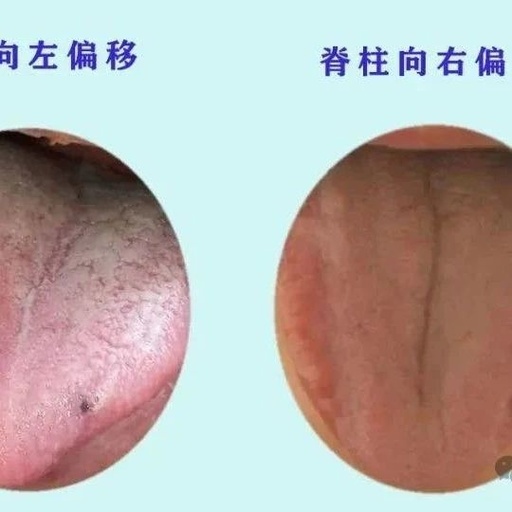
The color of the tongue refers to the hue of the tongue body. In healthy individuals, the tongue color is pale red. Common tongue colors can be categorized as follows:
(1) Pale White
This indicates that the patient has a deficiency syndrome, cold syndrome, or deficiency of blood and qi. If the tongue is pale white and thin, it indicates both blood and qi deficiency; if the tongue is pale white and moist, with a plump body and tooth marks, it is often a sign of deficiency cold syndrome. If the tongue is pale white, devoid of blood color, shriveled, and lacks luster, with no coating, it is termed a ‘shou bai zhe’ (熟白舌), indicating a critical condition where the patient’s yang qi is weak and yin essence is depleted.
(2) Red Tongue
The tongue color is slightly redder than normal, and in severe cases, it appears bright red. This indicates that the patient has a heat syndrome. If the tongue is bright red but dry with little moisture, and the coating is thick and yellow, it indicates a real heat syndrome. If only the tip of the tongue is red, it indicates heart fire rising. If the edges of the tongue are red, it indicates liver and gallbladder fire. If the center of the tongue is red, it indicates excess heat in the middle jiao. If the tongue is covered with deep red spots, it indicates that warm heat pathogens have harmed the heart and spleen. If the tongue has purple spots, it indicates impending purpura. A bright red tongue with little coating or cracks indicates a deficiency heat syndrome. A tongue that is red and tender, appearing moist but feeling dry, is a sign of fluid depletion.
(3) Scarlet Tongue
The tongue coating is deep red, with a color between red and purple, known as ‘jiang zhe’ (绛舌). This indicates that the patient has an external or internal injury syndrome. The formation of a scarlet tongue is due to excessive heat and accelerated blood flow, causing fullness in the tongue’s vessels. A dry scarlet tongue with prickles or cracks indicates intense internal heat, with heat entering the nutritive and blood levels. If the scarlet tongue has a yellow-white coating, it indicates that pathogens are lingering in the qi level. A scarlet tongue with large red spots indicates heat toxin attacking the heart. A scarlet tip indicates intense heart fire. A dry and scarlet tongue indicates stomach fire injuring fluids. A scarlet root indicates blood heat and internal dryness. If the scarlet tongue has little moisture, little coating, and is thin or cracked, it indicates a deficiency of yin with excess fire. If the scarlet tongue is shriveled and smooth with no coating, it is termed ‘jingmian zhe’ (镜面舌), indicating a critical condition of depleted stomach and kidney yin fluids. A scarlet tongue with little coating and moistness often indicates blood stasis syndrome.
(4) Purple Tongue
This indicates cold, heat diseases, and blood stasis. If the entire tongue is purple, it indicates extreme heat in the organs. A purple and swollen tongue with large red spots indicates heat toxin attacking the heart. A dark purple tongue indicates blood stasis syndrome. Purple spots on the tip of the tongue indicate heart blood stagnation due to liver qi stagnation. A tongue that is purple like pig liver, dull and lacking luster, indicates a critical condition of depleted stomach and kidney yin fluids.

